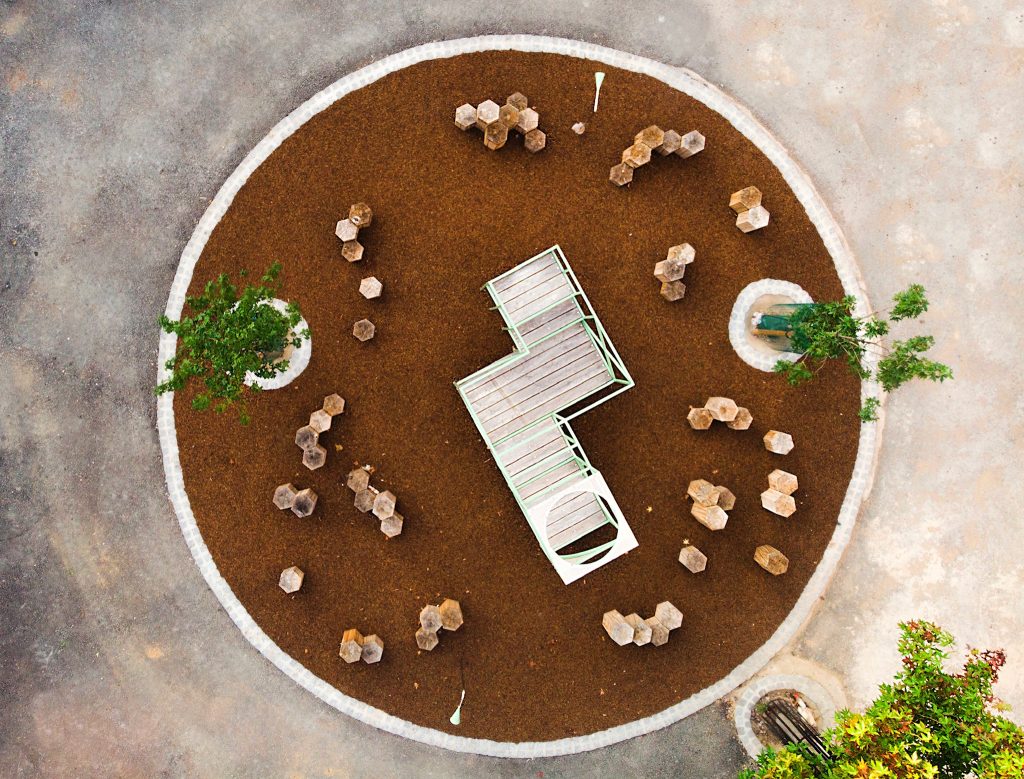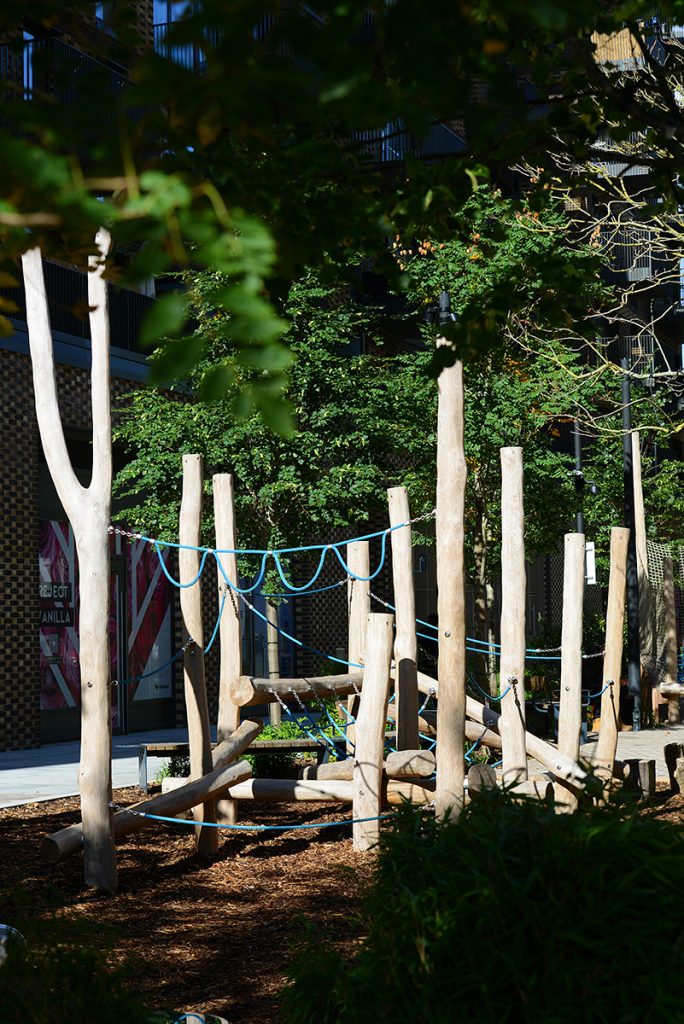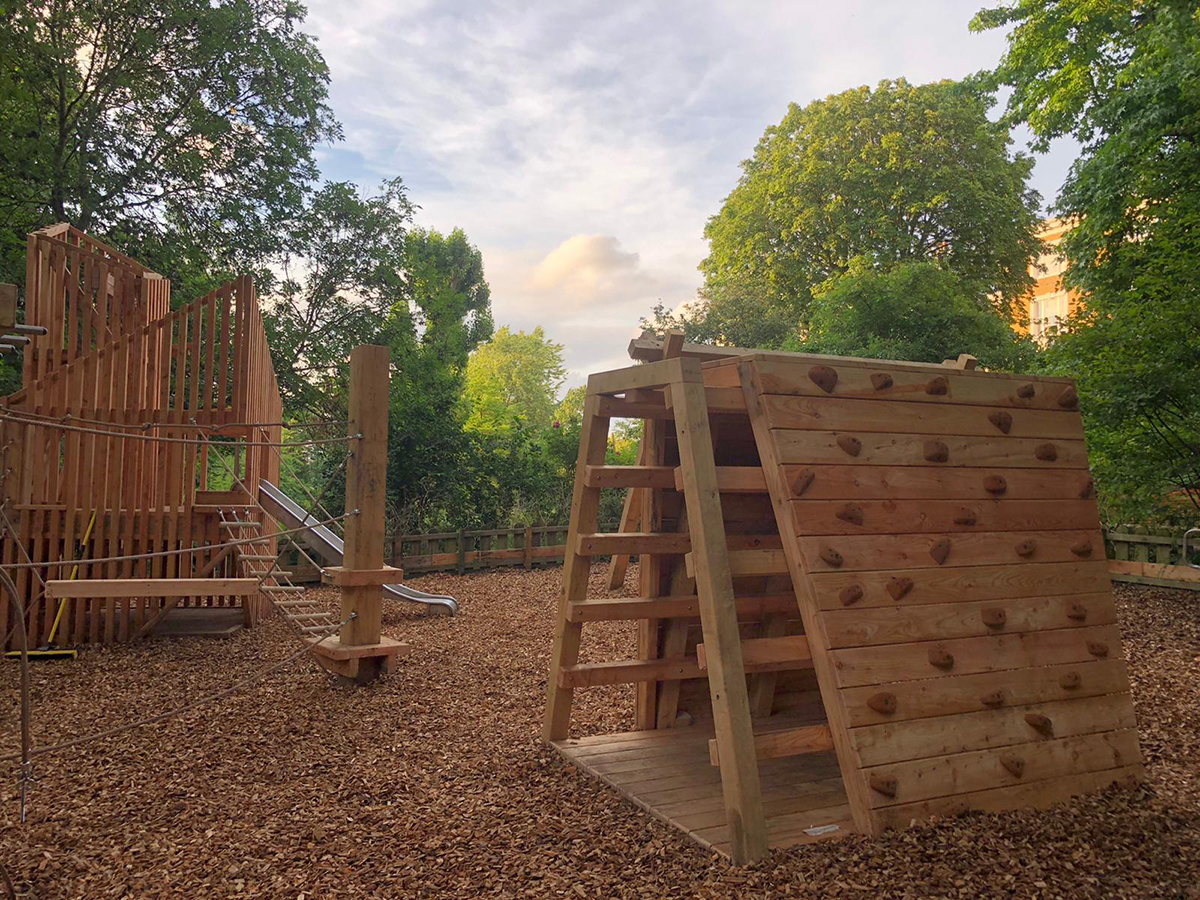Introduction
Designing a playground for an urban space comes with its unique set of challenges and opportunities. In densely populated areas, where space is often at a premium, creating a playground that is both functional and inviting requires thoughtful planning and innovative design. This blog post will guide you through the key considerations and strategies for designing an urban playground that fosters play, encourages community interaction, and enhances the overall urban landscape.
- Understanding Urban Constraints
- Space Optimisation
- Explore compact and multi-functional equipment to make the most of limited space. This can be done by working closely with a specialist designer such as PlayEquip. They will guide you through your concepts and reassure you that all designs are compliant with the play safety standards.
- Utilise vertical space with climbing structures, wall-mounted activities, and elevated play elements. If your footprint is limited, then go up. Remember that children like a space that feel likes it designed for them i.e. consider the size of the children. The average height of a 9-year-old is 133cm.
- Bespoke playground equipment design is often the best way to make the most of a space and budget when they’re both limited. Choose a design and build contractor that can facilitate this, rather than a normal playground equipment supplier.

- Safety in High-Density Areas
- Prioritise safety by incorporating soft, impact-absorbing surfaces to mitigate potential falls. Be aware of fall zones and have an expert play designer or inspector review the plans before equipment is purchased or installed.
- Consider the placement of equipment to minimise risks associated with nearby roads or pedestrian traffic. Remember, the context of the site is important. Consideration of the age of the intended user and whether the playground is supervised by adults.
- Inclusive Design for Diverse Communities
- Accessibility for All
- Ensure the playground is accessible to children of all abilities by incorporating ramps, wide pathways, and sensory-rich elements. Remember that disabilities are wide ranging. Close consultation can give you an idea of the local requirement which can then be implemented in the design.
- Install adaptive swings and seating to accommodate children with various mobility needs. These can be simple basket swing seats or You&Me Swings
- Cultural Sensitivity
- Reflect the diversity of the community through culturally inspired design elements, colours, and inclusive play experiences.
- Incorporate art installations that celebrate local culture and identity.

III. Engaging Play Experiences
- Innovative Play Structures
- Integrate modern and unique play structures that capture children’s imagination. The less prescribed the better. Choose shapes and forms over pirate ships and boats. The children’s imagination will do the rest of the work.
Nature Integration
- Bring elements of nature into the urban environment with natural materials, plants, and greenery. It is well known that natural environments in urbans spaces have great benefits to mental health and biodiversity.
- Design play areas that mimic natural landscapes, fostering a connection with the outdoors. Consider landforms such as mounds and embankments. These can be created using excavated ground from other playground equipment or construction works.
- Community Involvement and Feedback
- Public Consultation
- Engage with the local community to gather input on preferred play equipment, themes, and overall design. It is the job of the designer to understand the needs of the client and create a design that includes as many of the local requirements as possible.
- Conduct surveys or workshops to understand the diverse needs and preferences of the residents. Ideas for this can be seen here.

- Flexibility for Future Expansion
- Design the playground with modular components that allow for easy updates and expansions based on future community needs.
- Consider adaptable spaces for events and gatherings to enhance community cohesion. These can be performance spaces such as stages or leaving an open area of green space.
- Additional budgets for the space may come later and a phasing approach to the design may be the best way to make the most of the budget.
- Safety and Maintenance
- Lighting
- Ensure the playground is well-lit for evening use. Well-lit playground can be used all year round and will help to make the space to feel more welcoming.
- Choose materials and finishes that are durable and resistant to wear, reducing maintenance requirements. Speak to the experts in play design and explain how the space will be used. They will in turn create a material pallet to suit the space
- Regular Inspections and Maintenance
- Establish a routine inspection schedule to address wear and tear promptly. An OM manual should be delivered to the client once and playground has been installed. This should contain a maintenance programme and inspection table.
- Implement a maintenance plan that includes cleaning, repairs, and periodic equipment assessments. Annual inspections should be performed by a RPII certified playground inspector.
Conclusion
Designing a playground for an urban space requires a balance between creativity, functionality, and community engagement. By understanding the unique challenges of urban environments and integrating inclusive, engaging, and safe design principles, we can create playgrounds that not only serve as recreational spaces but also contribute to the vibrancy and well-being of urban communities. Whether nestled between buildings or integrated into a city park, a well-designed urban playground has the power to foster social connections, spark creativity, and enrich the lives of both children and adults alike.



